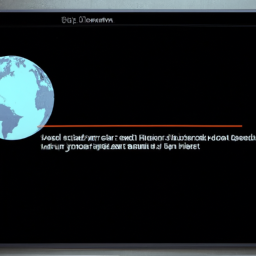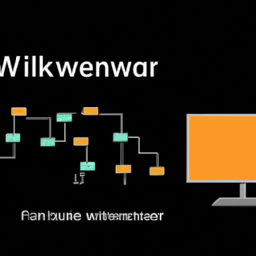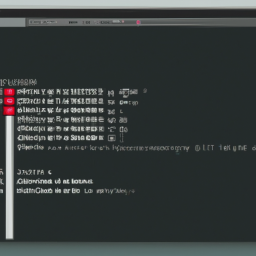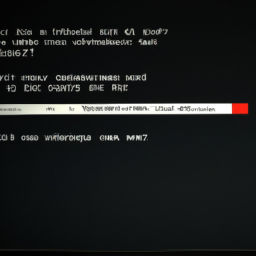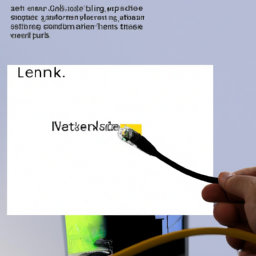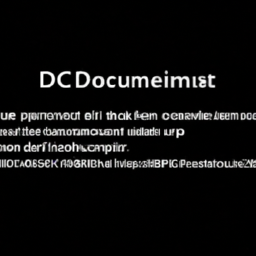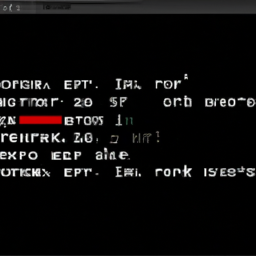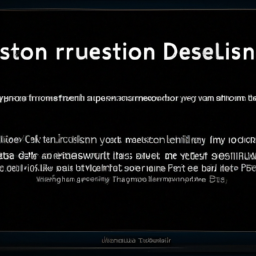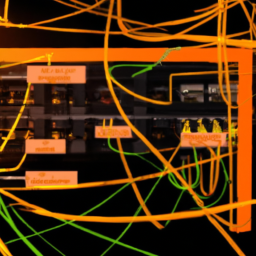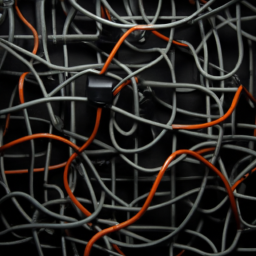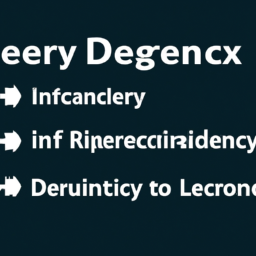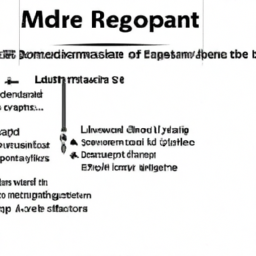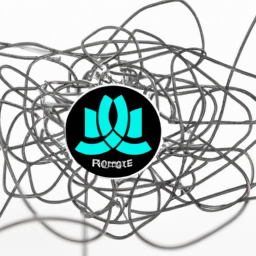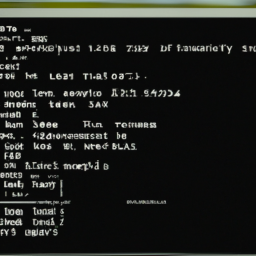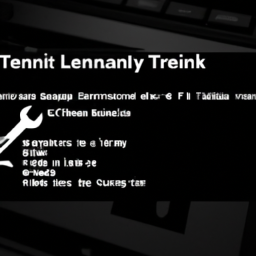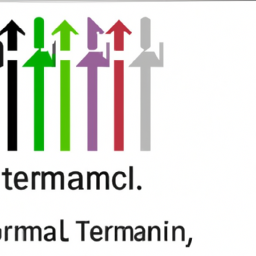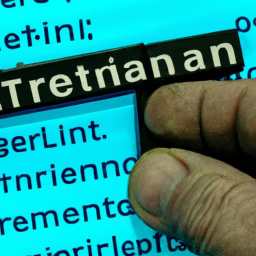Imagine you’re driving on a highway, ready to reach your destination, when suddenly you encounter a roadblock. Frustrating, isn’t it? Well, in the world of Linux networking, encountering a ‘Device Not Found’ error can feel just like that – a roadblock preventing your system from connecting to the network and functioning properly.
But fear not! This article is here to help you navigate through this obstacle with quick and effective solutions.
In this technical and precise guide, we will explore the most common causes of the ‘Device Not Found’ error in Linux networking and provide you with detailed steps to solve it. From checking hardware connections to updating drivers and firmware, we’ve got you covered. We’ll even show you how to reset your network configuration if needed.
So, buckle up and get ready to troubleshoot like a pro. With our quick solutions, you’ll be back on the network highway in no time.
Key Takeaways
- Checking hardware connections is important to ensure proper network connectivity.
- Verifying driver installation is necessary to ensure the network card is detected.
- Restarting network services can help resolve the ‘Device Not Found’ error.
- Updating network firmware and drivers can improve network stability and performance.
Check Hardware Connections
Make sure you’ve properly connected all of your hardware to avoid any ‘device not found’ errors in your Linux networking setup. A common cause of this issue is a loose or improperly connected network adapter. Begin by checking the physical connections of your network adapter to ensure it’s securely plugged into your computer’s motherboard.
Also, verify that the network cable is firmly connected to both the adapter and the router or modem. Additionally, you should check your network settings to ensure they’re configured correctly.
Troubleshooting network adapter issues and checking network settings are essential steps in resolving the ‘device not found’ error. Once you’ve confirmed that the hardware connections are correct, you can move on to verifying the driver installation.
Verify Driver Installation
Check if you’ve properly installed the driver for your network device. Troubleshooting network errors can be challenging, but verifying the driver installation is an essential step. The ‘device not found’ error in Linux networking can occur due to various reasons, such as incorrect or missing driver installation. To determine if the driver is installed correctly, you can use the lsmod command in the terminal to list the loaded modules. Look for the module corresponding to your network device. Additionally, you can use the lspci command to list the PCI devices and check if your network card is detected. If the driver is missing or not loaded, you may need to download and install the appropriate driver for your network device. Once you have confirmed the driver installation, you can move on to the next step — restarting the network services.
Restart Network Services
To get your network up and running smoothly again, all you need to do is restart the network services. Troubleshooting network errors can be frustrating, but restarting the network services is often a quick and effective solution.
When you restart the network services, you’re essentially refreshing the network configurations, which can resolve many common issues. To do this, open the terminal and enter the command ‘sudo service network-manager restart’ or ‘sudo systemctl restart network-manager’ depending on your Linux distribution.
After restarting the network services, check if the ‘device not found’ error is resolved. If not, you may need to update your network firmware and drivers. This will ensure that your network components are up to date and compatible with your Linux system, providing a more stable and reliable network connection.
Update Network Firmware and Drivers
Updating your network firmware and drivers can ensure a more stable and seamless network connection, paving the path for improved performance and productivity on your Linux system.
When troubleshooting network firmware issues, updating the firmware can fix bugs and vulnerabilities, enhance compatibility with newer network protocols, and improve overall network stability. Additionally, updating device drivers in Linux ensures that your network hardware is fully supported and capable of delivering optimal performance.
By keeping your network firmware and drivers up to date, you can prevent potential connectivity issues, reduce network downtime, and improve the overall reliability of your Linux networking. This proactive approach ensures that your system is equipped with the latest features and enhancements, allowing you to make the most of your network resources.
With your network firmware and drivers updated, you can now move on to the next section about resetting your network configuration for further troubleshooting.
Reset Network Configuration
Resetting your network configuration can be a simple yet effective solution to address any lingering connectivity issues and restore your Linux system to optimal networking performance. To reset your network configuration, you can follow these steps:
-
Reboot device: Start by rebooting your Linux system to refresh all the network settings and clear any temporary issues.
-
Check network settings: After rebooting, verify that your network settings are correct. Check the IP address, subnet mask, gateway, and DNS configurations to ensure they are properly configured.
-
Reset network interfaces: Use the command "ifconfig" or "ip" to reset your network interfaces. This will reset all the network-related configurations for your interfaces.
By resetting your network configuration and verifying the settings, you can often resolve the "device not found" error in Linux networking. If you are still facing issues, it may be necessary to seek professional assistance.
Seek Professional Assistance if Needed
If you’re feeling lost in the complexity of Linux networking issues, don’t hesitate to reach out to a professional for guidance and support. They can be your guiding light through the maze of uncertainties.
Troubleshooting network issues remotely is one of the key skills that professionals possess. It allows them to diagnose and resolve problems without being physically present. They can remotely access your system, analyze network configurations, and identify any potential errors or conflicts.
Moreover, professionals understand the importance of regular network maintenance and updates. They can help you establish a proactive approach to network management. This ensures that your system remains secure, stable, and optimized.
By seeking professional assistance, you can save time and effort, while also gaining peace of mind. You’ll know that your Linux networking issues are in capable hands.
Frequently Asked Questions
How do I troubleshoot a ‘Device Not Found’ error in Linux networking if the hardware connections are already verified?
To troubleshoot a ‘device not found’ error in Linux networking, you can explore alternative hardware troubleshooting methods.
Firstly, ensure the hardware connections are properly verified. If the issue persists, delve into kernel modules. Check if the necessary kernel module is loaded using the ‘lsmod’ command. If not, load it manually with ‘modprobe’.
Additionally, verify if the module is blacklisted in ‘/etc/modprobe.d/’ and remove it if necessary.
What should I do if I have already restarted the network services but I am still encountering the ‘Device Not Found’ error?
If restarting the network services didn’t resolve the ‘device not found’ error in Linux networking, there are alternative troubleshooting methods you can try.
First, check for common causes such as incorrect driver installation or hardware compatibility issues. Ensure that the device is properly connected and recognized by the operating system.
You can also try resetting the network configuration or updating the network drivers. These steps should help you resolve the issue and get your network device working again.
Are there any additional steps I can take to update network firmware and drivers if the usual methods are not working?
If the usual methods for updating network firmware and drivers in Linux aren’t working, there are alternative methods you can try. One option is to manually download the latest firmware and driver files from the manufacturer’s website and install them on your system.
Another option is to use a third-party tool like ethtool or mii-tool to diagnose and troubleshoot network firmware and driver issues. These tools can help you identify and fix any issues that may be causing the ‘device not found’ error.
How can I reset the network configuration in Linux if the ‘Device Not Found’ error persists?
If you’re still encountering the frustrating ‘device not found’ error in Linux networking, don’t worry, there’s a way to reset the network configuration. Troubleshooting network configurations can be a bit tricky, but resetting the settings is often an effective solution.
By doing this, you can clear any misconfigurations or conflicts that may be causing the error. Follow the precise steps for resetting network settings to get your network up and running smoothly again.
When is it advisable to seek professional assistance for resolving the ‘Device Not Found’ error in Linux networking?
If you’ve exhausted all troubleshooting methods and you’re still unable to resolve the ‘device not found’ error in Linux networking, it’s advisable to seek professional assistance. Professional help should be sought when you can’t identify the root cause of the issue or lack the technical expertise to resolve it.
They can provide a more in-depth analysis and offer solutions tailored to your specific problem.
Conclusion
In conclusion, troubleshooting the ‘device not found’ error in Linux networking requires a systematic approach. By checking hardware connections and verifying driver installation, you can resolve this issue effectively. Another step is restarting network services. Additionally, updating network firmware and drivers, as well as resetting network configuration, can help. If you find yourself struggling or lacking expertise, don’t hesitate to seek professional assistance. Remember, networking problems can be complex, but with the right knowledge and support, you can overcome them and ensure smooth connectivity. So, don’t let this error hold you back; dive into the technical intricacies and conquer them with precision and determination.


